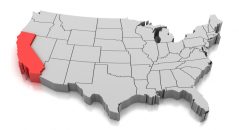
What is the Elimination-Reintegration Diet?
An elimination-reintegration diet is performed by completely eliminating gluten from your diet for two to four weeks. Foods containing gluten include rye, barley, wheat, oats, kamut, triticale and spelt must be completely avoided. All food products gluten content must be avoided as well. This includes sauces, salad dressings, and soup mixes. Some non-food products may also contain gluten so always check the label. For instance, some vitamins, medications, lipsticks, Play-Doh clay, and stamp and envelope gums may have gluten in them.
After elimination gluten in your diet, observe how you feel. Did your symptoms disappear? After two to four weeks, resume eating gluten. Did your symptoms come back? If you feel unwell after eating it, then it’s time to be on a gluten-free diet.
Symptoms of Gluten Intolerance
If you have gluten intolerance, you may experience one or more of the following symptoms:
- Gas and bloating
- Diarrhea or constipation
- Brain fog or fatigue right after gluten ingestion
- Moods wings, depression, anxiety or attention deficit disorder
- Dizziness
- Migraine
- Chronic fatigue or fibromyalgia
- Hormonal imbalance and consequently, infertility
- Joint swelling and inflammation
- Appearance of autoimmune disease such as rheumatoid arthritis, psoriasis, multiple sclerosis, lupus, etc.
- “Chicken skin” or keratosis pilaris usually found at the back of the arms
Gluten Intolerance vs. Celiac Disease
Didi you know that gluten intolerance and Celiac disease are not the same despite being used interchangeably? Furthermore, there are actually five different types of gluten intolerance identified. So what are their differences, one may ask.
Gluten intolerance refers to a condition wherein a person suffers symptoms right after ingesting gluten containing products. Usually, these persons are negative from Coeliac disease but nevertheless suffer from symptoms similar to Coeliac or gluten sensitivity. Doctors and researchers are slowly making the switch to using “non-celiac gluten sensitivity” instead of “gluten intolerance”.
Other gluten related problems include dermatitis herpetiformis, which characterized by itchy, skin rash (also known as gluten rash. Gluten ataxia, a rare autoimmune disease, which affects the neurological system is also caused by gluten.
Gluten intolerance and allergy is a lifelong condition with no cure. That means people afflicted with these conditions should avoid gluten containing foods and non-food items completely and for life.
Photo credit: visual.ly






